Maryland
State Flag
The state flag of Maryland was officially adopted in
1904.
The Maryland flag bears the arms of the Calvert and
Crossland families (also seen on Maryland's state seal).
Calvert was the family name of the Lords Baltimore who
founded Maryland, and their colors of gold and black appear
in the first and fourth quarters of the flag (and on several
of Maryland's state symbols; the state flower, state bird,
state insect, and even the state cat).
Crossland was the family of the mother of George Calvert,
first Lord Baltimore. The red and white Crossland colors,
with a cross bottony, appear in the second and third
quarters. The flag was first flown on October 11, 1880 in
Baltimore at a parade marking the 150th anniversary of the
founding of Baltimore. It was also flown on October 25,
1888, at the Gettysburg Battlefield for ceremonies
dedicating monuments to Maryland regiments of the Army of
the Potomac. |
|
Source:
State Symbols USA |
|
|
 Maryland
State Facts Maryland
State Facts
Picture: state seal of Maryland |
|
State Capital |
Annapolis |
|
Nickname |
Old Line State / Free State |
|
Motto |
Fatti Maschii Parole Femine (Manly deeds, womanly
words) |
|
Statehood |
April 28, 1788 (7th) |
|
Origin of Name |
Named to honor Henrietta Maria, wife of England's
King Charles I. |
|
Largest Cities |
Baltimore, Columbia, Silver Spring, Dundalk,
Wheaton-Glenmont, Ellicott City |
|
Border States |
Delaware, Pennsylvania, Virginia, West Virginia |
|
Area |
9,775 sq. mi., 42nd largest |
|
State Bird |
Baltimore Oriole |
|
State Flower |
Black-Eyed Susan (rudbeckia hirta) |
|
State Tree |
White Oak |
|
State Song |
Maryland, My Maryland |
 Travel and tourism site
for Maryland - This state travel and territorial
tourism site provides ideas for your vacations, meetings, and more. Travel and tourism site
for Maryland - This state travel and territorial
tourism site provides ideas for your vacations, meetings, and more. |
|
|
Maryland Stories |
|
|
St. Mary's Oyster Festival
Have you ever heard of oyster-shucking?
To shuck an oyster you open its shell and detach the
oyster inside. Every October, the St. Mary's Oyster
Festival in Leonardtown, Maryland, celebrates the
opening of the oyster season on the Chesapeake Bay.
The festival also recognizes the life of the people
who work the waters for a living.
More than 150,000 oysters are eaten during the
two-day festival. Shuckers use a special knife to do
the job, and one of the events at the Festival is
the National Oyster Shucking Championship Contest.
People come from all over the country to see who can
shuck two-dozen oysters the quickest and the best.
Some past winners from this event have gone on to
compete in the International Oyster Festival in
Galway, Ireland. Many people like their oysters raw,
but for those who prefer them cooked, there is a
National Oyster Cook-Off. |
|
|
Montgomery County
Agricultural Center / Fair
How much do you know about farm life? If your county
or state has a fair, you can learn a lot about it
there.
A 1940s project to get young people involved in
agriculture and homemaking skills turned into one of
the largest county fairs on the East Coast -- and it
was started by kids. The first Montgomery County
Agricultural Fair began as a one-day livestock show
in 1949, sponsored by the county's 4-H Club, an
organization for young people interested in farming.
The fair was a way for farmers to show their best
farm animals to each other and to get youth excited
about farming, gardening, and homemaking skills such
as preserving foods.
Over the years, the fair has become a way to get a
peek into farm life, as fewer people are involved in
farming. The Agricultural Center is a cluster of
buildings built for the fair that are used all year
long to host shows, exhibitions, and meetings.
Today, the Montgomery County Agricultural Fair has
grown into a weeklong event, involving more than
2,000 volunteers. |
|
|
Benjamin Banneker Historical
Park & Museum
Do you know who Benjamin Banneker was and what he
did?
Benjamin Banneker was a self-educated scientist at a
time when most African Americans were slaves. Born a
free black man in the British Colony of Maryland in
1731, he received some formal education, but he
mostly borrowed books and taught himself science and
mathematics. At 22, he borrowed a pocket watch, and
without any training, figured out how to carve a
working wooden clock that chimed each hour. Because
of this clock, he became well known and people would
visit him just to see his creation.
Banneker ran his family farm for many years, but
when he was in his late 50s, a neighbor's son lent
him a telescope. He became interested in astronomy,
the study of the planets and stars, and again taught
himself a new science. He made calculations of
tides, sunrises and sunsets, and even predicted an
eclipse. For several years he published an almanac
of these calculations. Today, he is best known for
publishing six almanacs, called "Benjamin Banneker's
Almanac," between 1792 and 1797.
In the 1790s, Banneker also helped survey and lay
out the land for Washington, D.C., which became the
nation's capital. For a look at Banneker's amazing
life, visit the Benjamin Banneker Historical Park &
Museum in Ellicott, City, Maryland. |
|
|
Chestertown Tea Party
Festival
Most people have heard of the Boston Tea Party, but
did you know that Maryland had a similar "tea
party?"
In 1773, the British Parliament passed the Tea Act,
which taxed tea and restricted who was allowed to
import tea into the American Colonies. Bostonians
protested by boarding three ships in the night
disguised as Native Americans and dumping the
British tea into Boston Harbor. This famous protest
became known as the Boston Tea Party. The British
responded by closing the Port of Boston until the
Colonists paid for the destroyed tea.
This angered many people in the other Colonies, and
in Chestertown, Maryland, the citizens protested by
deciding not to buy, sell, or drink British tea.
Then, in May 1774, they boarded a British ship
loaded with a cargo of tea and threw it into the
Chester River. Unlike the Tea Party in Boston, the
citizens of Chestertown made no attempt to disguise
themselves and acted in broad daylight. Every May,
the Chestertown Tea Party Festival is the site of a
celebration remembering those brave citizens.
There's a parade, a 10-mile run, Colonial crafts
demonstrations, and of course, a re-enactment of the
historic Chestertown Tea Party! |
|
|
Cracking Crabs in Maryland
Do you know what a "jimmy" is?
Jimmies, callinectes sapidus, beautiful swimmers,
channelers, sooks, and she-crabs -- are all names
for the blue crab, a crustacean found in the
Chesapeake Bay. The Chesapeake Bay is a large bay on
the Atlantic coast of the United States. It has
played an important role in the history and culture
of the state of Maryland.
Chesapeake Bay fishermen, or watermen, have
harvested the waters for crabs, oysters, clams, and
fish for many generations. They work in skipjacks, a
name for workboats or fishing boats. Commercial
fishing was a huge industry in Maryland, but
pollution has caused a decrease in the population of
the bay's marine life. Consequently, many watermen
struggle to maintain their way of life.
Nevertheless, Marylanders love their crab and eat
them by the bushel at crab houses. These restaurants
cover their tables with brown paper, unload a bushel
of crabs on the table and provide knives and mallets
for customers to pry the crabs open. Have you ever
eaten a crab? |
|
|
The Carroll County Ghost Walk
Does your town play host to any ghosts?
Every year the Public Library of Carroll County,
Maryland, is a ghost host! Since the early 1980s,
the library has held the Carroll County Ghost Walk.
At this event, visitors come to the library and
learn about local ghost legends and sightings.
Afterward, they head out into the streets to tour
the town of Westminster and see the spooky spots for
themselves. Is Westminster really haunted? Some
people think so. In fact, Cockey's Tavern in
Westminster is said to have its own ghost -- a
confederate soldier who was wounded in the Battle of
Gettysburg. Stories say that he likes to help
himself at the bar, rearrange pictures on the wall,
and, in general, be a troublemaker.
Over the years many strange and unexplained
sightings have taken place in many other places in
Carroll County. Come to the Carroll County Ghost
Walk and see for yourself! |
|
|
Historic Takoma Park and
Takoma Park Elementary School
You probably know someone who works in a city but
doesn't live there. Today that's common. But before
most people owned cars and most cities had bus
systems, people needed to live as close to work as
possible.
That all changed in the late 1800s, when railroads
were built from cities to outlying areas, allowing
people to work in one place and live in another.
People would work in the city and, at the end of the
day, take the train to their homes in the suburbs,
where it was quieter and less crowded. The suburbs
also often offered cheaper housing.
Takoma Park, Maryland, began in 1883 as a "railroad
suburb" of Washington, D.C., our nation's capital.
Nowadays, many people commute from their homes in
the suburbs to their jobs in the cities in cars
rather than trains, but lots of people still rely on
public transportation. Today, thousands of Takoma
Park residents commute to Washington using the
subway, which is a kind of railroad. So, more than
100 years after its founding, Takoma Park is still
considered a railroad suburb. |
|
Source:
Library of Congress |
|
|
Cool America |
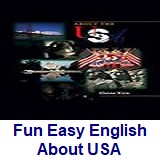 About the U.S.A. About the U.S.A.
About the U.S.A. is an American
Studies reader that examines the customs, government, and history of the
United States of America. The text provides a wealth of information on U.S.
geography and history; the roles of local, state, and federal government;
national holidays and symbols; the Constitution; and citizenship. The book,
which was written for intermediate to advanced learners of English, contains
a range of activities for language students to practice listening, speaking,
reading, and writing. (opens to a new PDF window)
Great English reading
practice. |
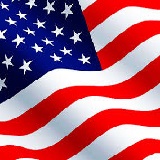 About
America About
America
Learn about the fascinating history and government of
the United States of America. Lessons include content on
American Government, American History, and Integrated
Civics. Handouts with interactive games and
student-centered activities encompass all four language
skills: speaking, listening, reading, and writing.
Great English reading practice for
beginning to intermediate students. |
 American Teens Talk! American Teens Talk!
Americans Teens Talk! is a collection of interviews of
American high school students. Each interview is accompanied by vocabulary
notes and discussion questions. The interviews in American Teens Talk! give
learners a view into the lives of adolescents in the U.S. Through the
written format of the interviews, learners are able to increase their
vocabulary, practice their reading and listening skills, engage in
discussions, and learn more about U.S. culture. These
interviews come with audio programs.
Great English listening and
reading |
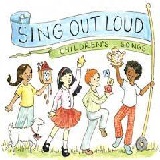 Sing Out Loud Children's Songs Sing Out Loud Children's Songs
Sing Out Loud Children's Songs includes popular children's songs in the U.S.A. Posters accompany the
individual Sing Out Loud Children's Songs. These
songs come with audio programs.
Great English listening and reading
practice. |
 Sing Out Loud Traditional Songs Sing Out Loud Traditional Songs
The Sing Out Loud Traditional Songs
collection contains 13 traditional American folk songs and song lyrics.
Listen to the songs online, read the lyrics, and collect the posters that
accompany the songs. These
songs come with audio programs.
Great English listening and reading
practice. |
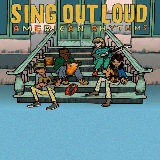 Sing Out Loud American Rhythms Sing Out Loud American Rhythms
Do you love music? Want to use it
to learn English? Check out the hip-hop inspired song "Peace" from Sing Out
Loud American Rhythms. American Rhythms includes a variety of musical genres
from many different artists in the U.S.A. These songs will appeal to teens
and young adults. These
songs come with audio programs.
Great English listening and reading
practice. |
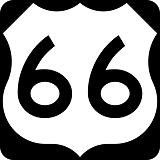 Route
66 - Famous American Road Route
66 - Famous American Road
U.S. Route 66 (US 66 or Route 66), also known as the Will Rogers Highway, the
Main Street of America or the Mother Road, was one of the original highways in
the U.S. Highway System. The highway, which became one of the most famous roads
in the United States, originally ran from Chicago, Illinois, through Missouri,
Kansas, Oklahoma, Texas, New Mexico, and Arizona before ending in Santa Monica,
California, near Los Angeles, covering a total of 2,448 miles (3,940 km). It was
recognized in popular culture by both the hit song "(Get Your Kicks on) Route
66" and the Route 66 television show in the 1960s. |
Route 66: The Highway That's the Best
(Beginner - Listening)
A video lesson which shows you an interesting place in America.
The English is
spoken at 75% of normal speed.
Great English listening practice.
This video shows travel along Route 66, the most famous road in
America. |
Chicago: The Start of Route 66
(Beginner - Listening)
A video lesson which shows you an interesting place in America.
The English is
spoken at 75% of normal speed.
Great English listening practice.
This video shows travel along Route 66, the most famous road in
America. |
Going West for Decades on Route 66
(Beginner - Listening)
A video lesson which shows you an interesting place in America.
The English is
spoken at 75% of normal speed.
Great English listening practice.
This video shows travel along Route 66, the most famous road in
America. |
Arizona: The Spirit of Route 66
(Beginner - Listening)
A video lesson which shows you an interesting place in America.
The English is
spoken at 75% of normal speed.
Great English listening practice.
This video shows travel along Route 66, the most famous road in
America. |
Route 66 California: The End of the Trail
(Beginner - Listening)
A video lesson which shows you an interesting place in America.
The English is
spoken at 75% of normal speed.
Great English listening practice.
This video shows travel along Route 66, the most famous road in
America. |
Ten Must-See Route 66 Attractions
(Beginner - Listening)
A video lesson which shows you an interesting place in America.
The English is
spoken at 75% of normal speed.
Great English listening practice.
This video shows travel along Route 66, the most famous road in
America. |
Four Famous Foods On Route 66
(Beginner - Listening)
A video lesson which shows you an interesting place in America.
The English is
spoken at 75% of normal speed.
Great English listening practice.
This video shows travel along Route 66, the most famous road in
America. |
International Tourists Drawn to Route 66
(Beginner - Listening)
A video lesson which shows you an interesting place in America.
The English is
spoken at 75% of normal speed.
Great English listening practice.
This video shows travel along Route 66, the most famous road in
America. |
|